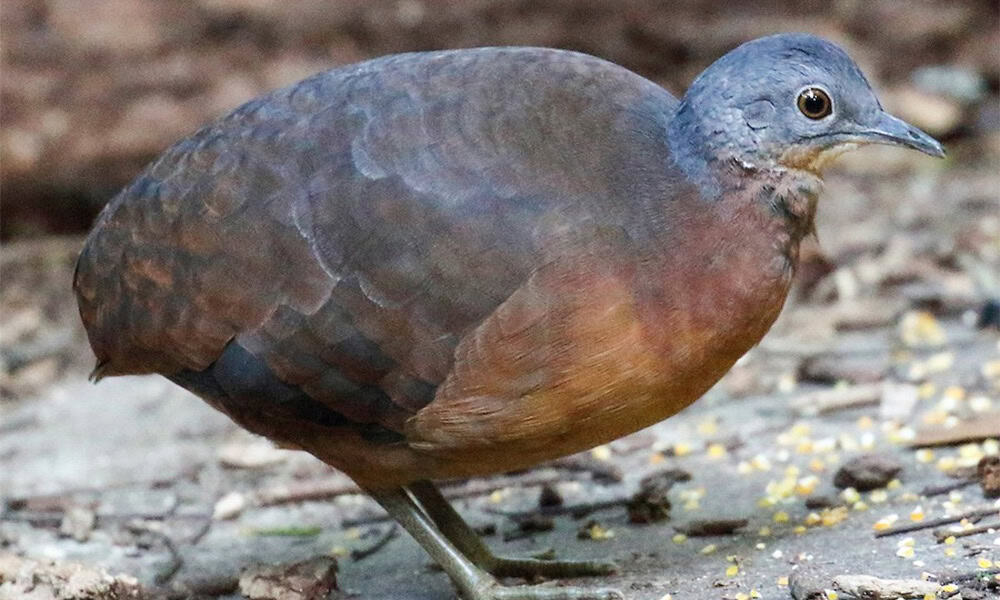Forty-six species of tinamous inhabit the Americas with five calling Costa Rica home. Today we discuss the little tinamou, a secretive little bird that you’re more likely to hear than see.
The little tinamou (Crypturellus soui) is known as the tinamú chico in Spanish, which is an adorable name. Like all of the other tinamous in Costa Rica, you’re equally likely to hear it referred to as a gallina de monte, or in this case, gallinita de monte because it’s so small.
Little tinamous are, in fact, little. They’re the smallest of Costa Rica’s tinamous. They’re about nine inches long and weigh around a half a pound. Their stout little bodies are uniformly brown, and their tails are nearly nonexistent. In summary, they could accurately be described as fat little brown birds.
Although they are the most widespread species of tinamou in the country, they are exceedingly difficult to see in person. They inhabit tangled, dense secondary growth vegetation, weedy agricultural areas, and thick forest edges in humid regions. Since those areas are terrible places to go for a walk, people rarely see them.
That doesn’t mean they go undetected. These little birds disclose their whereabouts with song. I’m a sucker for a good written description of birdsong and I found two good ones for the little tinamou. Here’s the first, a ‘beautifully modulated, tremulous’ whistle. Or better yet, a ‘mellifluous crescendo, followed by a beautiful, long-drawn whistle, full yet tenuous, which neither rises nor falls in pitch.’
That second one is by our old friend Alexander F. Skutch in a 1963 article entitled Life History of the Little Tinamou. If those descriptions are too verbose for your liking, I’ve also heard it described as similar to a high-pitched horse whinny.
Not much is known about the life history of little tinamous. Their diet consists mostly of seeds and berries gleaned from the ground with the occasional insect or small frog thrown in. They spend the night on the ground, hidden in the bushes, while other species of tinamous are known to roost in trees. There’s also some information about their nesting and reproductive behavior. They lay one or two purplish eggs directly on the ground amongst the thick vegetation that they inhabit.
As with many other species of tinamou, it is thought that the male is responsible for incubating the eggs. This was a hypothesis that Alexander F. Skutch tested by painting the bird sitting on the nest with some white paint on a stick and then checking to see if the painted bird was sitting on the nest in the following days (It was, and he assumed that was the male). He did the same trick with the lesser ground-cuckoo.
I can’t tell you how much I love the fact that he was spending full days creeping around the forest painting birds with sticks. His wife must have been so understanding. If I were to pitch a full day of painting birds to my wife, that proposal would be met with a furrowed brow and a hard ‘No.’
I have yet to encounter a little tinamou in person. I have, however, recorded them a few times with my camera traps. Usually, the vegetation is so thick in the areas where I record them that the videos are black and white and grainy due to the low light, but I’ve picked out the best quality clips for the video below.
About the Author
Vincent Losasso, founder of Guanacaste Wildlife Monitoring, is a biologist who works with camera traps throughout Costa Rica. Learn more about his projects on facebook or instagram. You can also email him at: vincent@guanacastewildlifemonitoring.com

